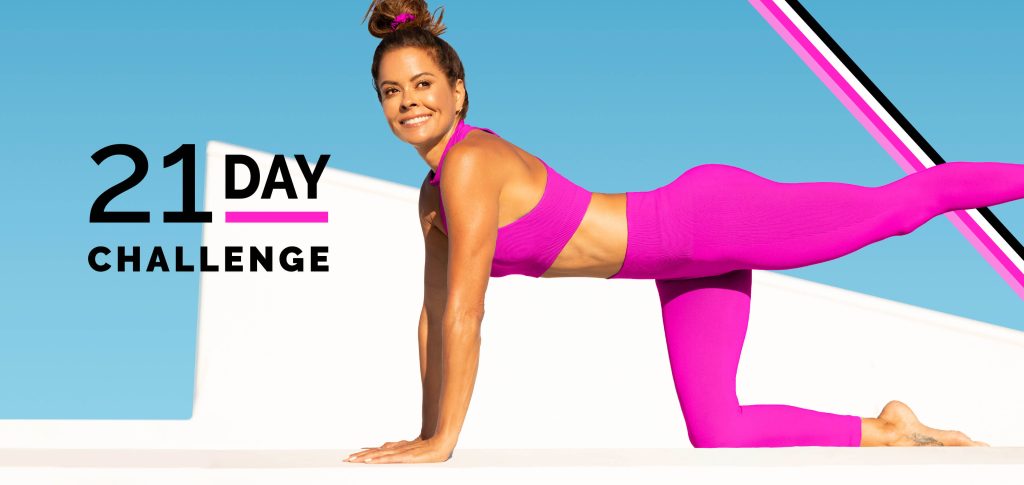Fresh Start: 21-Day Fitness Challenge to Build Good Habits

This guide aims to help you kickstart a new workout routine and build good habits within 21 days. The main goal is to promote patience, consistency, and shape a healthier body through daily physical activities. Steps to Follow:
Days 1-7: First Week – Implementing Basic Changes
Days 1-3: Goal Setting and Schedule:
Setting clear and achievable goals is crucial to stay focused during the initial phase:
- Specific Goals: Define precise objectives for the 21-day challenge. These might include weight loss targets, fitness milestones, or habit-forming goals like daily exercise routines or dietary changes.
- Planning the Workout Schedule: Establish a structured plan for workouts. Determine the best time slots for exercise, select suitable workout locations (whether at a gym, outdoors, or at home), and outline the types of exercises you’ll perform each day. It could involve a mix of cardiovascular exercises, strength training, flexibility exercises, or high-intensity interval training (HIIT).
Days 4-5: Commence Workouts:
This phase is about initiating physical activity and getting your body accustomed to the workout routine:
- Cardiovascular Exercises: Engage in cardio workouts such as running, cycling, or jumping rope. Begin with a moderate duration of 20-30 minutes per session to elevate your heart rate and enhance endurance.
- Basic Exercises: Incorporate fundamental exercises like planks, squats, push-ups, and lunges. These exercises target multiple muscle groups and serve as a foundation for further workouts.
Days 6-7: Innovation and Adjustment:
During this period, it’s essential to adapt and refine your initial plan based on your experiences:
- Review and Adaptation: Reflect on your progress and experiences from the first days. Adjust your workout routine if certain exercises feel more effective or if any need modification.
- Diversification: Introduce new exercises or variations to prevent monotony and keep your workouts interesting. You might consider adding variations of existing exercises, trying new workout styles, or exploring different environments for exercise (e.g., outdoor workouts, group classes).

Days 8-14: Continued Expansion and Adjustment
Days 8-10: Focus on Core Movements:
During this period, the emphasis is on enhancing the intensity and diversity of workouts:
- Intensified Cardio Workouts: Increase the duration and intensity of cardiovascular exercises. Extend the duration of running, cycling, or other cardio activities to challenge endurance levels.
- Core Strengthening: Concentrate on exercises that strengthen core muscles, such as planks, crunches, Russian twists, and leg raises. Strengthening the core provides stability and helps prevent injuries.
Days 11-12: Elevate the Difficulty:
This phase involves pushing the boundaries of your workout routine:
- Progressive Workouts: Gradually increase the intensity, repetitions, or weights for strength exercises. Progressively challenge yourself by adding more sets, increasing resistance, or trying advanced variations of exercises.
- Nutritional Adjustment: Pay attention to your diet and ensure it aligns with your fitness goals. Emphasize whole foods, lean proteins, complex carbohydrates, and adequate hydration to support your increased activity levels.
Days 13-14: Relaxation and Self-Care:
Taking time for recovery and self-care is vital during this period:
- Active Recovery: Allow time for the body to recover by incorporating active recovery days. Engage in low-impact activities like yoga, stretching, or light walking to promote blood circulation and muscle relaxation.
- Rest and Rejuvenation: Prioritize adequate rest and quality sleep to support muscle repair and overall recovery. Sleep is crucial for the body to recover from intense workouts and to maintain energy levels.

Days 15-21: Refinement and Consolidation
Days 15-18: High-Intensity Training:
This phase focuses on maximizing the intensity and effectiveness of workouts:
- Advanced Training: Engage in high-intensity workouts to push your limits further. Incorporate interval training, circuit training, or HIIT (High-Intensity Interval Training) sessions to elevate heart rate and burn more calories.
- Combination Workouts: Combine different types of exercises for comprehensive training. This may involve mixing cardio, strength, and flexibility exercises in one session for a holistic workout experience.
Days 19-20: Review and Adjustment of Results:
This period is about assessing progress and making necessary adaptations:
- Evaluation: Review your fitness journey during the challenge. Assess achievements, improvements, and areas that need further attention.
- Adjustment: Based on your review, make adjustments to your workout routine, diet, or overall approach. Incorporate any learnings or observations to refine your plan for better results.
Day 21: Summary and Next Steps Planning:
As the challenge concludes, it’s time for reflection and future planning:
- Reflection: Summarize your 21-day experience. Acknowledge achievements, challenges overcome, and the overall impact on your health and well-being.
- Future Planning: Plan ahead for the continuation of your fitness journey beyond the challenge. Set new goals, establish a maintenance plan, or outline the next steps to sustain the positive changes achieved.

Important Notes:
- Most Important: Patience and Consistency:
- New habits take time to form, so be patient with the process.
- Maintain a positive attitude and don’t give up halfway through.
- Healthy Eating Regimen:
- Eat a balanced diet providing sufficient energy for workouts.
- Stay hydrated and focus on providing your body with proper nutrition.
- Rest and Recovery:
- Ensure you allocate enough time for your body to recover after each workout session.
Source: Admin compiled from the Internet